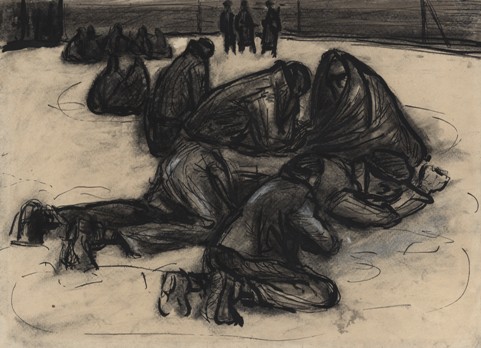In January 1945, the Red Army approached within 50 km of the Stutthof camp. At that point, the German authorities decided to evacuate the camp and its subcamps. On January 25, 1945, after the morning roll call at 4 a.m., about 37,000 prisoners were led out of the main camp. They marched for a week to finally reach makeshift camps west of Gdańsk. In harsh winter conditions, with virtually no access to food, many prisoners died of exhaustion, and those who were unable to continue walking were killed by German guards. After being placed in the new camps, the prisoners continued to suffer from hunger and disease. It is estimated that around 20,000 people lost their lives during the death marches.
Approximately 5,000 prisoners from the Stutthof subcamps were taken to the coast of the Vistula Lagoon. There, they were forced to enter the icy water, after which mass shootings took place. About 12,000 prisoners were left in the subcamps and the main camp, where a typhus epidemic broke out. On April 25 and 27, 1945, the next stages of the evacuation of prisoners began, with the aim of transporting them across the sea to Flensburg and Lübeck in Germany. Half of those evacuated were killed or died during transport, and their naked bodies were thrown into the Baltic Sea. As the barges carrying the prisoners approached Lübeck, the local German authorities did not allow the prisoners on board to disembark. As a result, almost all of them were killed. In total, about 7,000 prisoners died in this part of the evacuation.
When the Red Army liberated the Stutthof camp on May 9, 1945, there were only about 150 prisoners left alive.
